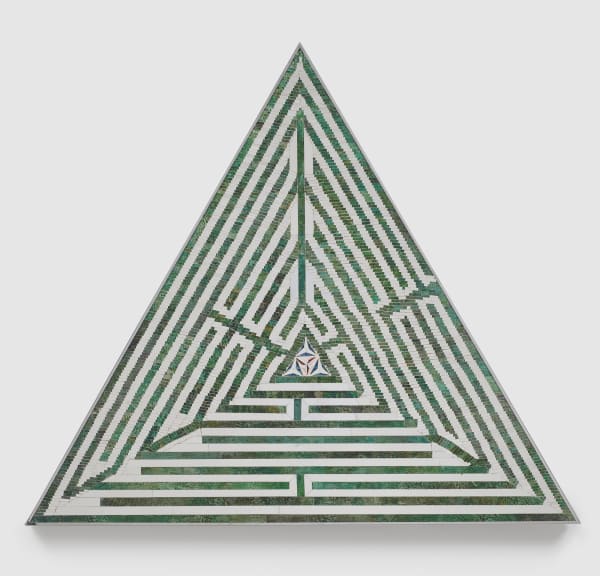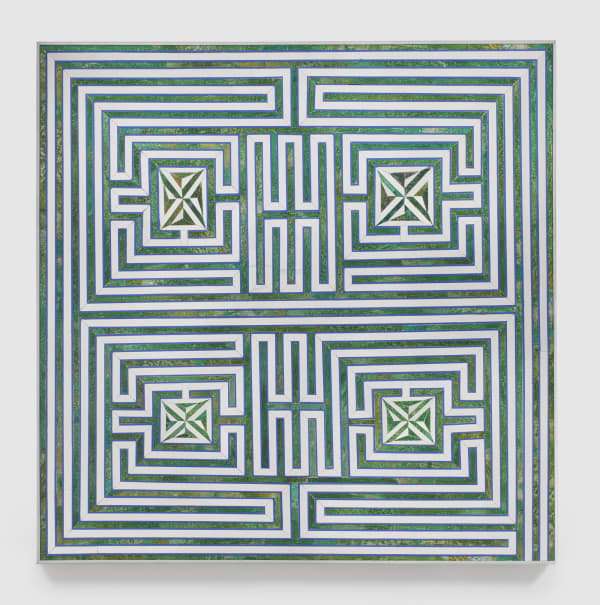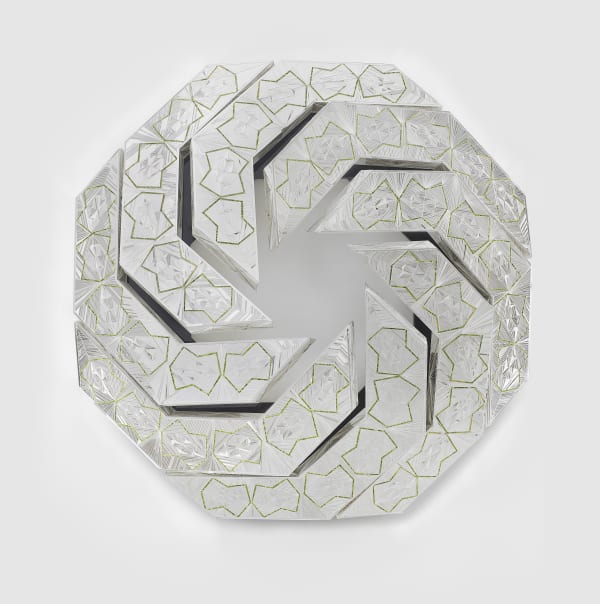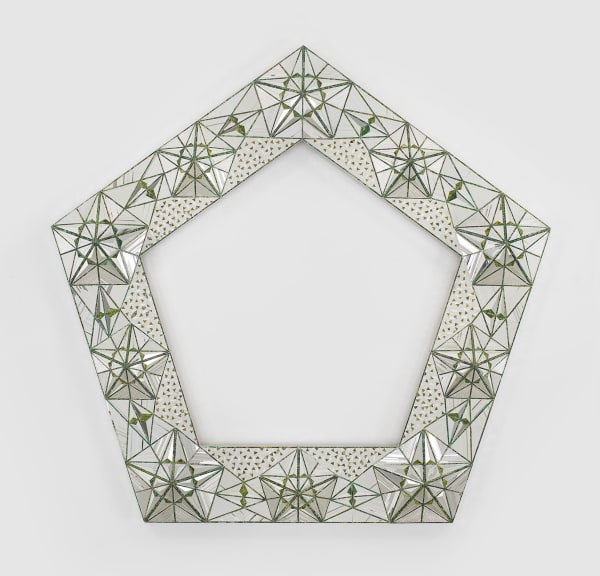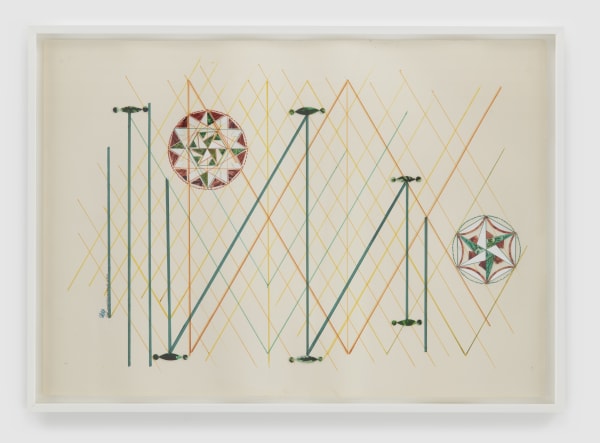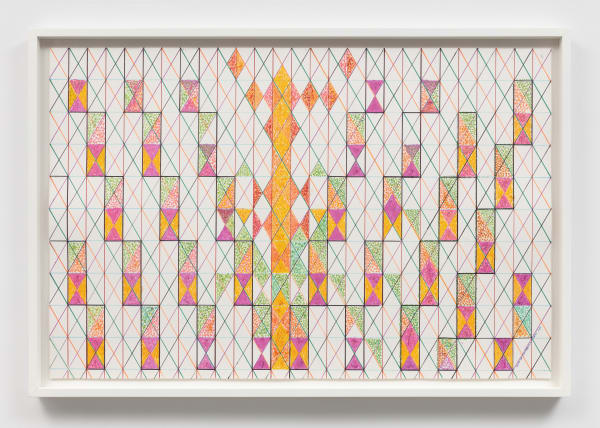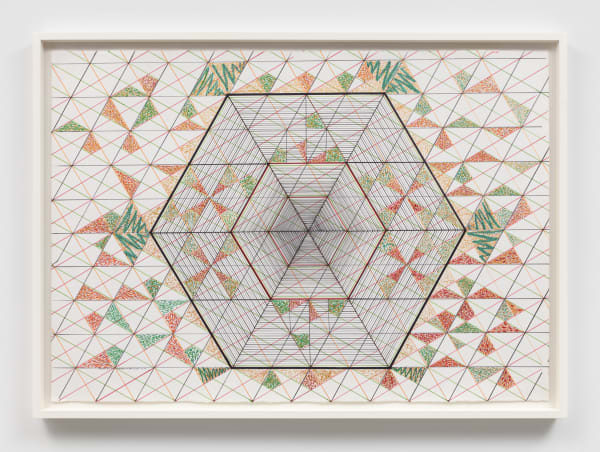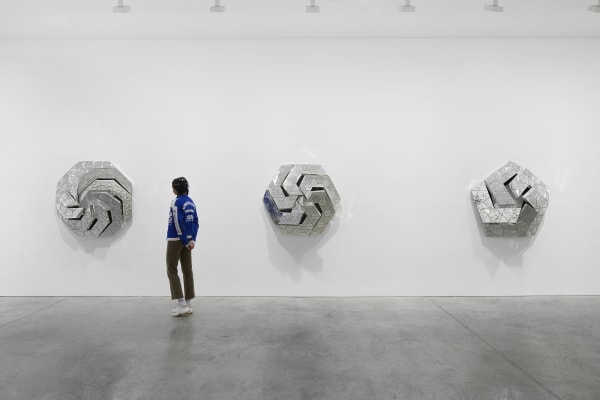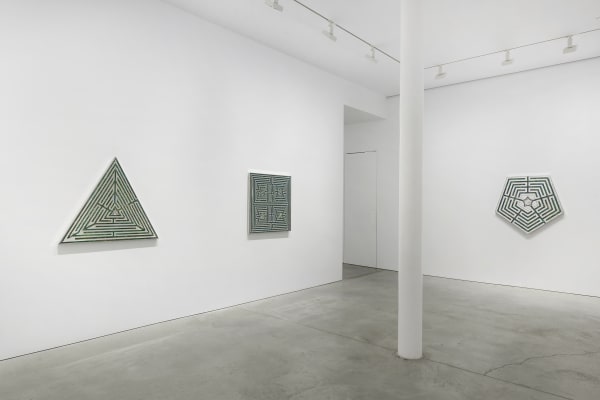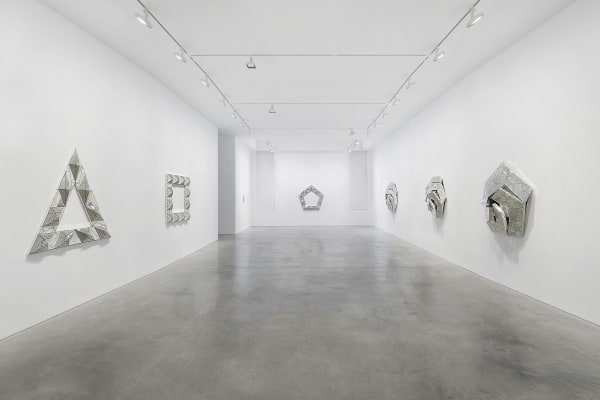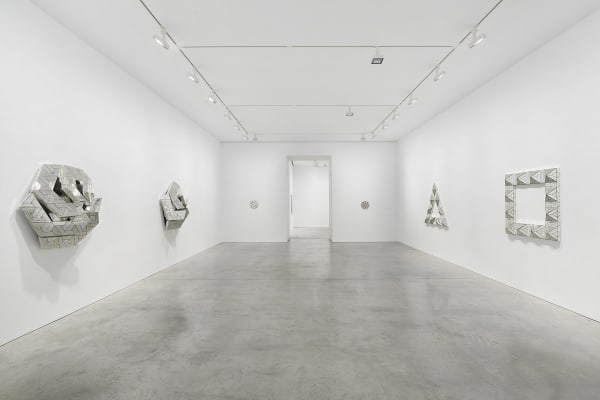-
-
Over six decades, Monir Shahroudy Farmanfarmaian (1922 - 2019) investigated the intricate geometries of her Iranian heritage, reconfiguring traditional craft techniques to explore the philosophical, poetic, and perceptual possibilities of interlocking primary forms. Tied to a mystical understanding of shapes as sacred and connected to a divine natural order, her unit-based compositions reveal uniformity, repetition, and precedent as the basis for endless recombination. This exhibition brings together major mirror-mosaic works and related geometric drawings from Monir's prolific period following her return to Iran from New York in 2004.
-

Monir in her studio, Tehran, 2017. Photo: James Whineray.
-
-

Shah Cheragh mosque, Shiraz, Iran
-

Monir in her studio, Tehran, 2017. Photo: James Whineray.
-
-

Detail from Monir's studio, Tehran, 2017. Photo: James Whineray.
-
The work of Monir Shahroudy Farmanfarmaian (b. Qazvin, Iran, 1924 - d. 2019) has been exhibited internationally beginning in the 1960’s. Her forthcoming solo exhibition at the High Museum of Art in Atlanta, GA will open in 2022. Recent solo exhibitions include Sunset Sunrise, Irish Museum of Modern Art, Dublin, Ireland (2018), which travelled to Sharjah Art Foundation, United Arab Emirates (2019); Mirror Variations: The Art of Monir Shahroudy Farmanfarmaian, Grand Rapids Art Museum, MI (2018); Lineages, Savannah College of Art and Design Museum of Art, Savannah, GA (2017); Monir Shahroudy Farmanfarmaian: Infinite Possibility. Mirror Works and Drawings, 1974-2014, Serralves Museum of Contemporary Art, Porto, Portugal (2014), which travelled to Solomon R. Guggenheim Museum, New York, NY (2015); and Chrysler Museum of Art, Norfolk, VA (2017); Monir Shahroudy Farmanfarmaian: Convertibles and Polygons, The Museum of Fine Arts, Houston, TX (2013); Monir Shahroudy Farmanfarmaian: Mirror Mosaics, Victoria and Albert Museum, London, United Kingdom (2007). Monir participated in the 2009 and 1964 Venice Biennales, and represented Iran in the 1958 Venice Biennale, where she was awarded the Gold Medal for her contribution. Other recent biennials include the Bruges Triennial 2018, Belgium; the 11th Gwangju Biennale, South Korea (2016); the 2015 Vienna Biennale, Austria; Prospect.3 New Orleans, LA (2014); Sharjah Biennial 11: Re:emerge, Towards a New Cultural Cartography, Sharjah Art Foundation, United Arab Emirates (2013); and the 29th Bienal de São Paulo, Brazil (2010).
Monir Shahroudy Farmanfarmaian: Mirror-works and Drawings (2004–2016): GALLERY EXHIBITION AT 48 WALKER ST & 291 GRAND ST
Past viewing_room

